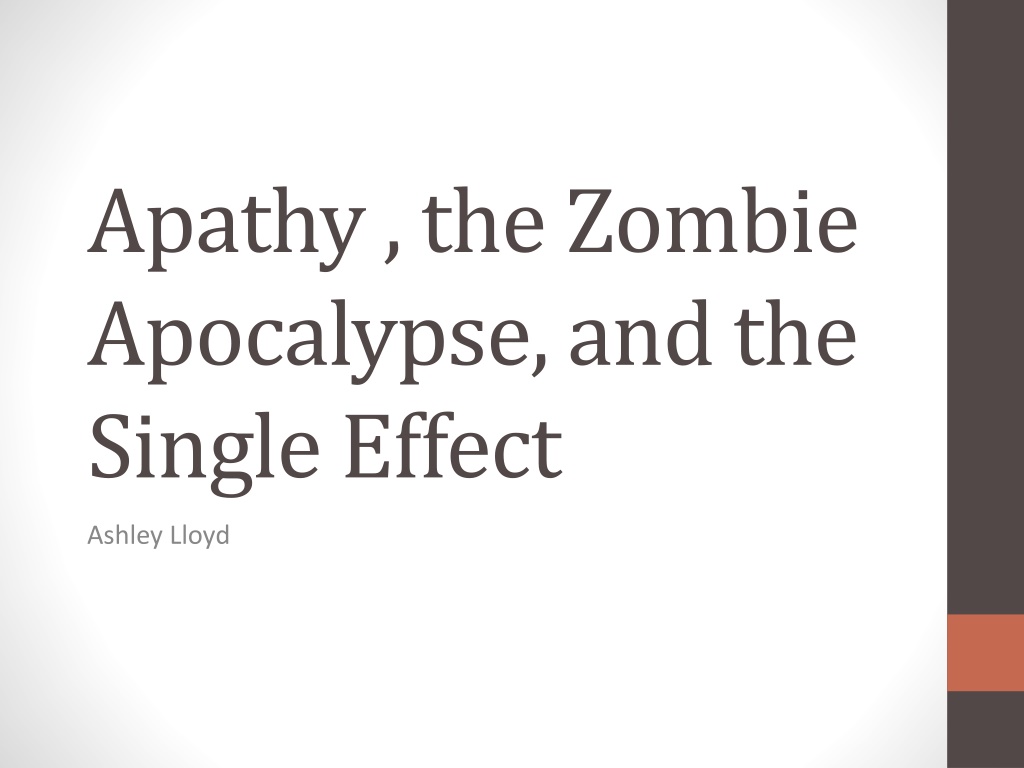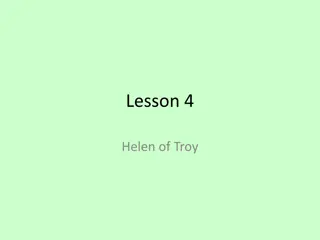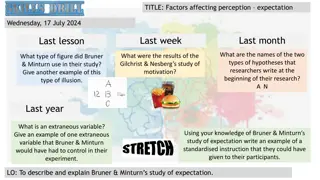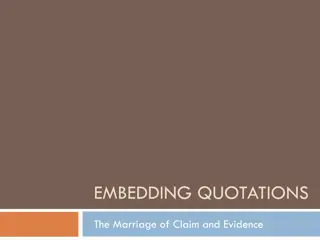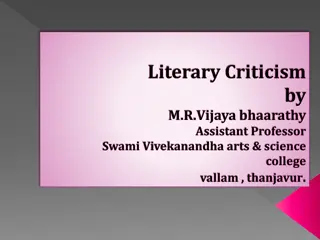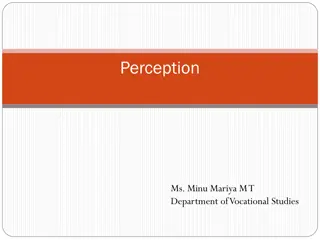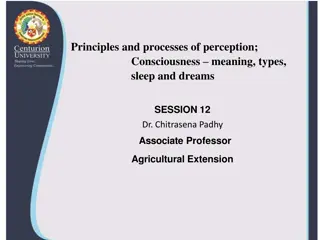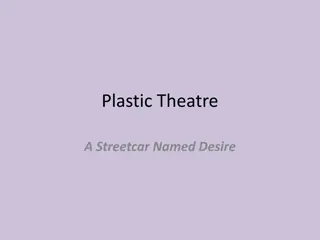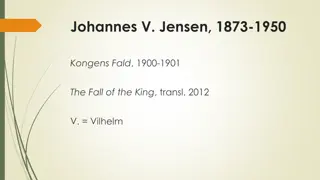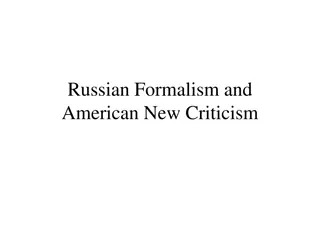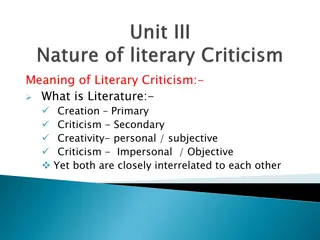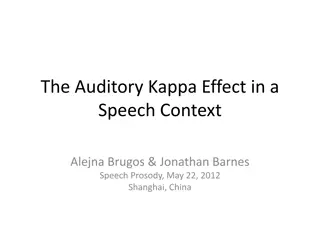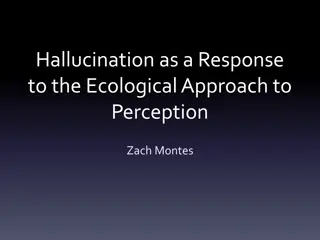Exploring Effects and Perception in Literary Works
Delve into the interconnected short stories, reflective essays, and psychological connections presented in "Apathy, the Zombie Apocalypse, and the Single Effect" by Ashley Lloyd. Discover the creative processes of renowned authors like Edgar Allan Poe and Tolstoy, exploring sensory processing, bottom-up versus top-down processing, and the use of first-person limited perspective in storytelling.
Download Presentation

Please find below an Image/Link to download the presentation.
The content on the website is provided AS IS for your information and personal use only. It may not be sold, licensed, or shared on other websites without obtaining consent from the author. Download presentation by click this link. If you encounter any issues during the download, it is possible that the publisher has removed the file from their server.
E N D
Presentation Transcript
Apathy , the Zombie Apocalypse, and the Single Effect Ashley Lloyd
Project Scope Two interconnected short stories One reflective essay Connections to other writers and psychology
I prefer commencing with the consideration of an effect I say to myself, in the first place, Of the innumerable effects, or impressions, of which the heart, the intellect, or (more generally) the soul is susceptible, what one shall I, on the present occasion, select? -Edgar Allan Poe Edgar Allan Poe, The Philosophy of Composition , Graham s Magazine, vol. XXVIII, no. 4, April 1846, 28:163-167.
Tolstoy makes the familiar seem strange by not naming the familiar object. He describes an object as if he were seeing it for the first time, an event as if it were happening for the first time. -Victor Shklovsky, "Art as Technique Don't tell me the moon is shining; show me the glint of light on broken glass. -Anton Chekhov Shklovsky, Victor. "Art as Technique": Literary Theory: An Anthology. Malden, MA: Blackwell Pub, 2004. 15-21.
Sensory Processing Bottom-Up Processing Takes in raw information Synthesizes framework as details are revealed Top-Down Processing Starts with a framework Fits all details into predefined frame King, Laura. The Science of Psychology, An Appreciative View. McGraw Hill, 2008.
Sensory Processing Bottom-Up Processing Top-Down Processing The winter evening settles down With smell of steaks in passageways. Six o'clock. The burnt-out ends of smoky days. And now a gusty shower wraps The grimy scraps Of withered leaves about your feet On winter evenings around six o clock, you can smell people cooking dinner. If it rains and the wind blows, there are wet leaves on the ground. -T.S. Eliot
Use of First Person Limited Allows for direct sensory information Feel thoughts, rather than being told them The hall stretched in front of her, dark. The doors on both sides were closed, dark stained wood against the white walls. Maria suppressed a shudder. Ok, just need to get the paints. That s all. The paints. She took a step forward. The hallway wasn t even really all that long. All she had to do was walk 20 feet forward, past the closed doors. Past the doors with no light pouring from underneath. Just dark, dead, wooden doors.
Use of Sensory Stimuli Multiple senses to provide sensory information All-encompassing experience The echoes of her laugh died away, leaving a chasm of sound behind them. Not quite silent though. No. If she listened hard enough in the silence, Maria could hear them. Breathing. Their lungs moving out of a reflex, steadily pumping oxygen to their defunct brains, to their dangling limbs, to their staring dead eyes.
Use of Sensory Deprivation Focus on the few details provided Exact control Ability to create a climactic scene Each inch forward added at least a pound of weight, blocks of iron belted around her ankles, pulling her into the floor. Her hands felt wood, carved with painstaking detail, yarn and flaking paint. A rocking horse. She allowed her mind to skip forward like an old CD. Nothing to think about. The weights on her feet were twenty times heavier. More boxes of clothes, dragged aside. A small easel, covered with the cakey feeling of dried finger paints. She had passed this before. She was going in circles, in zig zags, repeating herself endlessly as each step took more and more energy.
